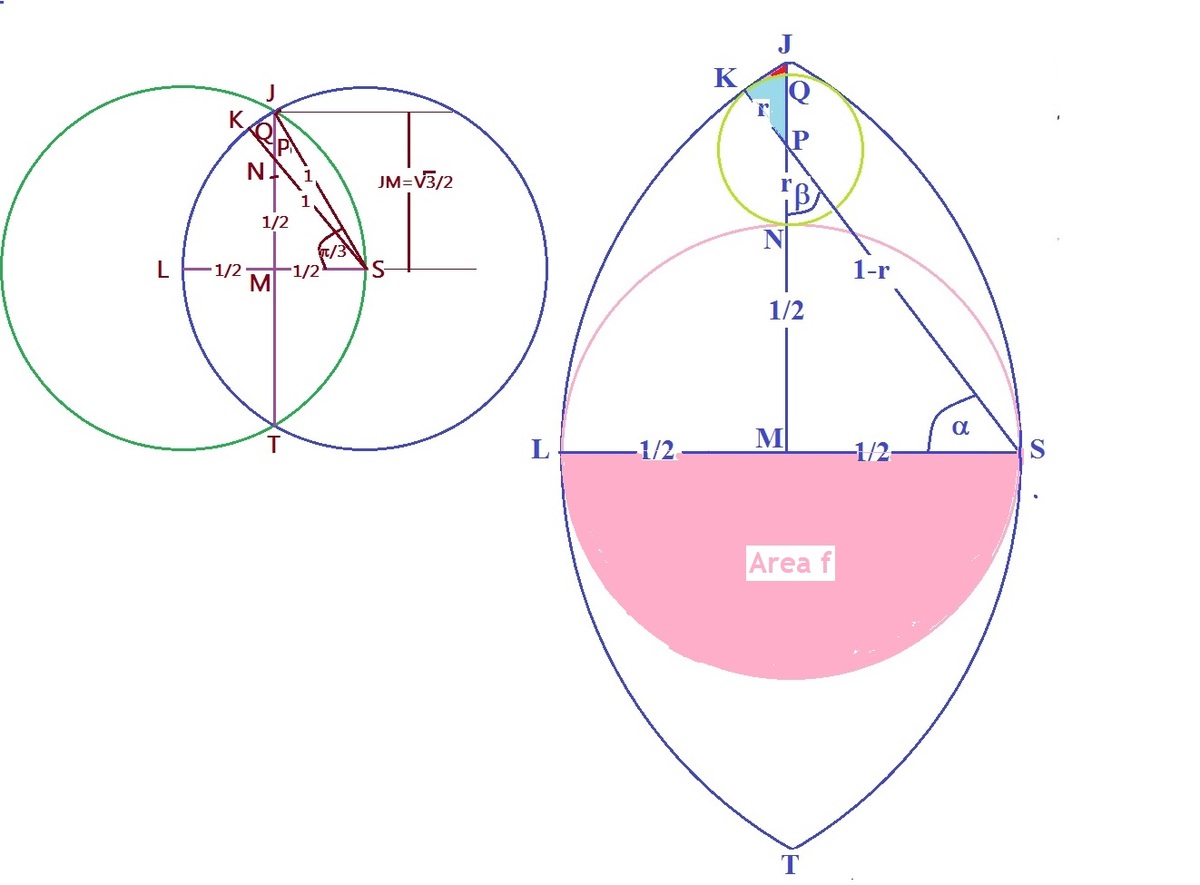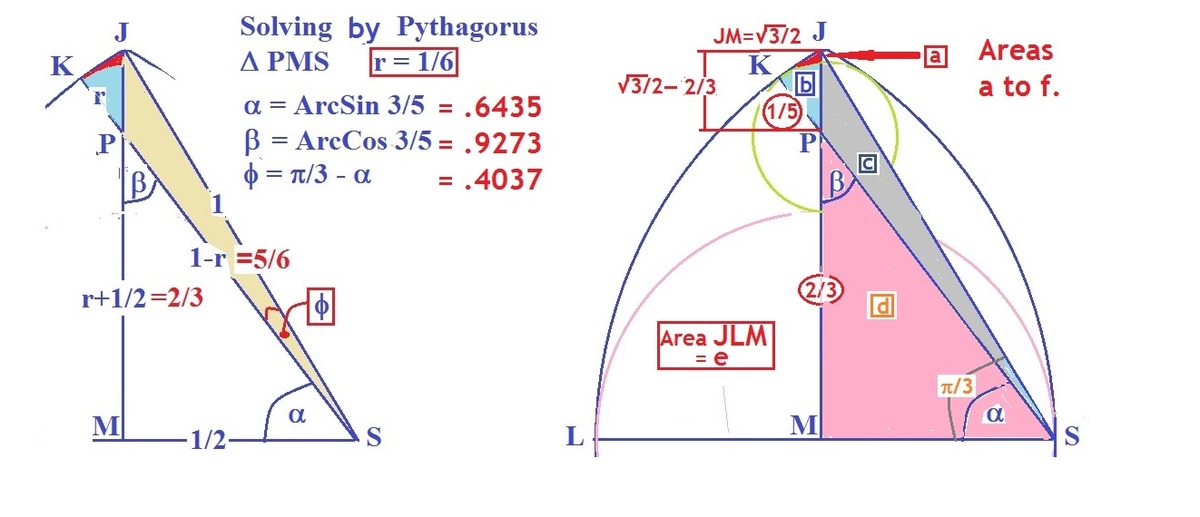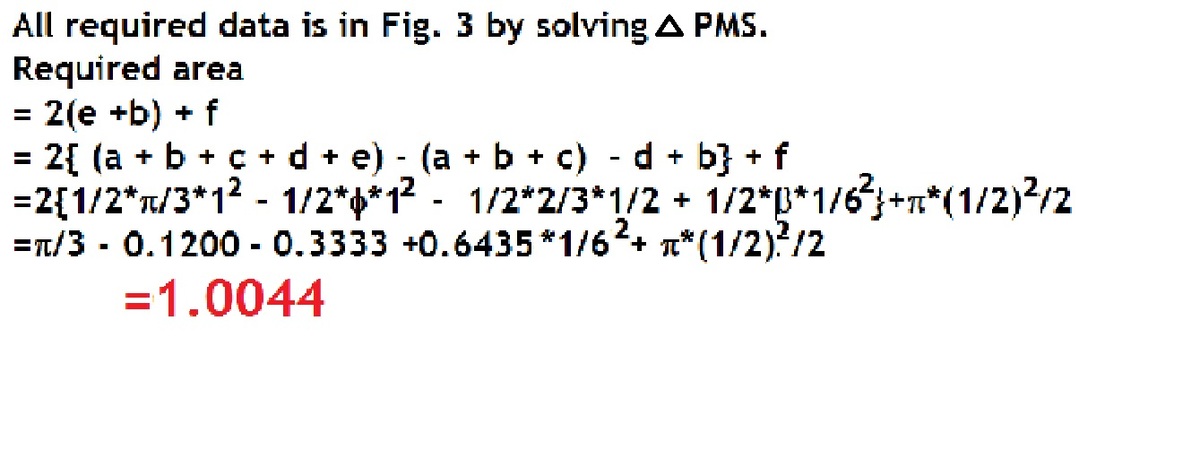Mossy Easter Egg Sangaku
Two large circles both with radius pass through each other's center, as shown above.
The mid-sized circle is tangent to the two large circles at their centers.
The smallest circle is tangent to all the other 3 circles.
What is the area of the red-shaded region?
Give your answer to the nearest 3 decimal places.
The answer is 1.0045.
This section requires Javascript.
You are seeing this because something didn't load right. We suggest you, (a) try
refreshing the page, (b) enabling javascript if it is disabled on your browser and,
finally, (c)
loading the
non-javascript version of this page
. We're sorry about the hassle.



If r is the radius of the smallest circle, then A B = 2 1 , B D = 2 1 + r , A D = 1 − r . Pythagoras tells us that r = 6 1 , and hence that sin α = 5 3 , where α = ∠ B D C .
The small sector D E F has area 2 1 × 2 α × 3 6 1 = 3 6 1 α . The big sectors A C E and F A C both have area 2 1 ( 2 1 π − α ) 1 2 = 4 1 π − 2 1 α . The triangle A D C has area 3 1 . Thus the curved region A B C F E has area 3 6 1 α + 2 ( 4 1 π − 2 1 α ) − 3 1 = 2 1 π − 3 1 − 3 6 3 5 α and hence the desired shaded region has area 2 1 π − 3 1 − 3 6 3 5 α + 8 1 π = 8 5 π − 3 1 − 3 6 3 5 sin − 1 5 3 = 1 . 0 0 4 5 4